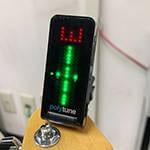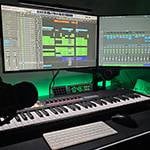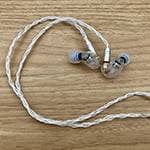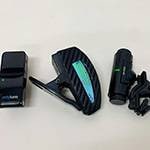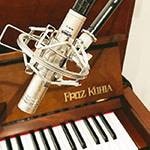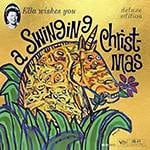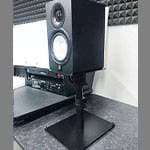
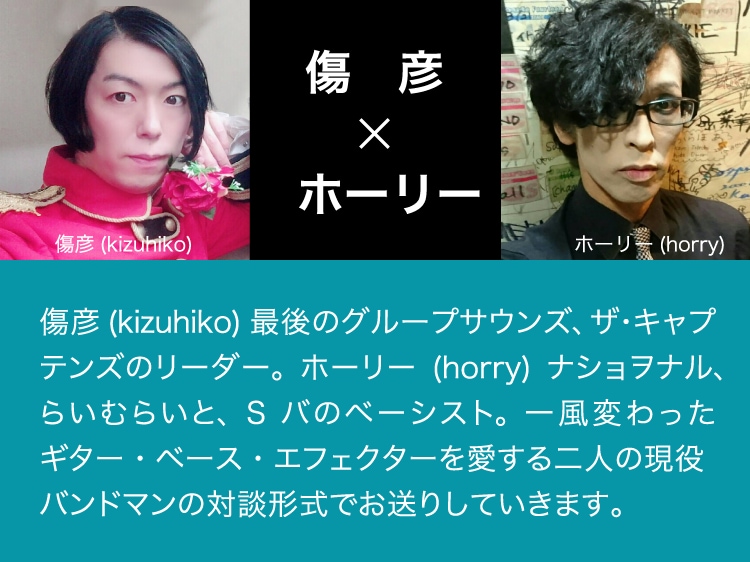
So, this time… we're picking up where we left off last time. I looked back on my own experiences, and it turned out to be longer than I expected...
That just means you have a lot of experience.
Experience is all I have, really. (laughs)
Then, by all means, continue! Was this around the early 2000s?
Yep. Last time, we ended with a story from 2002, so this time will be the next year in 2003, I think. By the way, what kind of recording environment did you have around that time, kizuhiko? You were already pretty active in the industry, right?
Around then, the Captains had just started working under a music agency in Tokyo. We made our major label debut in 2005, so we were still an indie band at that point.
Got it. As for me, that was around the time I met the members of National—who’s currently on hiatus—and we started a band called Lyrics. Back then… I think we were recording at a studio located two stations from Machida, at a place called Fuchinobe.
Was it a recording studio and not just a rehearsal studio?
Yeah, it was a privately-run studio… It was mainly used just for recording. If I remember right, it was a studio that the band Crazy Ken often used. I remember seeing their tour gear just lying around the place.
Oh, that kind of stuff really gets you excited. Like, when you see the band name stenciled on the cases, or old backstage passes stuck on the walls.
Exactly! Just seeing it gets you pumped. So yeah, we recorded there… It was digital recording, but the approach was the same, I think. We tracked drums and bass together, then layered everything else on top. I think we usually got it done in 2 or 3 takes. But, then we did go back and fix small parts here and there later.
Yeah, that was around the time we first recorded using pro tools, too.
There are so many DAW options now, but back then, it felt like Pro Tools was standard.
DAW Product List
I think Cubase is pretty popular these days? There are a bunch of others too... I'm not super knowledgeable about DAWs, so I can't really go into detail, but it seems like each one has its own feel and workflow. Anyway, getting back to the story — we didn’t book the studio by the hour, but by the day. So we had plenty of time. That place allowed us to make noise even late at night, so as long as the engineer could stay awake, we just kept recording. Sometimes we even stayed overnight at the studio.
Wow. It kind of makes you feel bad for the engineer, though...
I mean, we musicians got breaks while others were recording, but the engineer was stuck there the whole time.
Yeah, engineers basically have to work non-stop... That studio wasn’t really set up for overnight stays, so we just crashed on the couch or even the floor. We were still young back then (lol).
Well, as the bassist, my parts were usually done early, so sometimes I would just leave and let the others take over (lol).
Oh, and I remember messing around with a double bass that was lying around in the studio — I ended up layering it over the bass track, but it didn’t make the final cut though.
Yeah, anything just lying around in the studio makes you wanna use it.
It kind of sparks ideas, you know? So by that point, we weren’t really worried about track limits. That’s the beauty of digital recording. We just layered ideas as they came, as long as we had time. Or rather, as long as the engineer could stay awake (lol).
Yeah, engineers really need to stay focused. Their ears must get super tired too.
So, yeah — we recorded at that studio in Fuchinobe, but did the mixing somewhere else.
Before that, we used to finish everything at the same studio we recorded in, but around this time, we started seeing more cases where the tracking and mixing were done at different places, or even by different people.
Oh yeah, I remember being really surprised the first time I worked with a mastering engineer who specialized only in that!
Ideally, having the same person handle everything from start to finish might be best…
But in that case, we recorded how we wanted to in a studio we were comfortable in, and then handed it off to someone the label trusted for mixing.
Just to be clear though — it’s not that we didn’t trust the engineer at the Fuchinobe studio.
Actually, most of the recordings for that label were done by him. It's more accurate to say they just let us handle the tracking our own way.
Having a recording environment where you feel comfortable performing is super important.
Yeah, that band released three albums, and we recorded all of them in Fuchinobe and had the same person do the mixing.
That “same person” was Junya Iwata — he’s pretty well-known in that scene.
Now that I think about it, the mastering was done at a totally different place too.
I vaguely remember going to Roppongi for the mastering session… but I honestly don’t remember what studio it was (lol).
Well, at least you knew it was the big city (lol)
Yeah, it was definitely the big city. (lol)
Now that you mention it, how did we deliver the recordings from Fuchinobe to the mix studio back then?
These days you’d just use a file transfer service or something…
But I don't think stuff like that existed yet at the time.
But it was digital data, right?
Probably… Maybe it was on a data CD-R
with a track sheet included?
Yeah.
So, that band eventually broke up, and then came National.
We're on hiatus now, though.
Oh I know that band well. They’re bizarre and eccentric in the best way.
Thanks (lol)
As for recording with National… it was kind of all over the place.
I feel like we used a different approach every time.
It sounds like you had a solid group that could handle anything.
Maybe it was just a sign of the times…
The recording methods really started to diversify around the mid-2000s.
Yeah, that sounds about right.
Looking back in order…
I think our first session was at a pretty big recording studio… I think it was Galva Studio?
Kawasaki-pro from the band posted about it recently, so i’m pretty sure that’s the one.
We did the recording there, and then the mixing was done at PEACE MUSIC.
Oh, nice.
PEACE MUSIC is actually a pretty well-known studio, but…
I don't remember ever going there myself.
It turns out that I didn’t take part in the mixing session.
Our schedules just didn’t line up, and I wasn't the type to interfere with the mix anyway, so I just left it to them, I think. (lol)
The photo is from Galva Studio.
Looking at it now, I think maybe we recorded live all together?



Recording all together at once—I love that!
Yeah, that’s the beauty of band recordings.
This must’ve been around 2006, I think?
The studio had different amps we could choose from, and that time I picked an ASHDOWN bass amp.
They’re not really seen in rehearsal studios or live houses, but I really liked it.
Ah yeah, that brand was kind of trendy back then.
I had a bandmate who actually carried around their own ASHDOWN amp.
These would be the equivalent models nowadays:
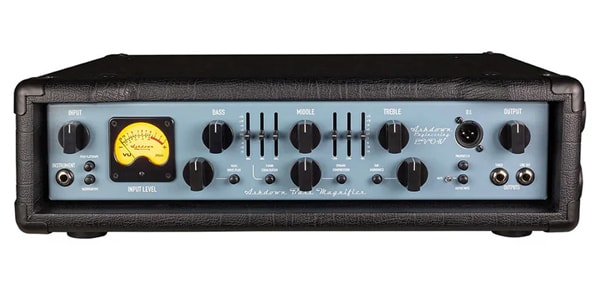
ASHDOWN / ABM-600-EVO IV
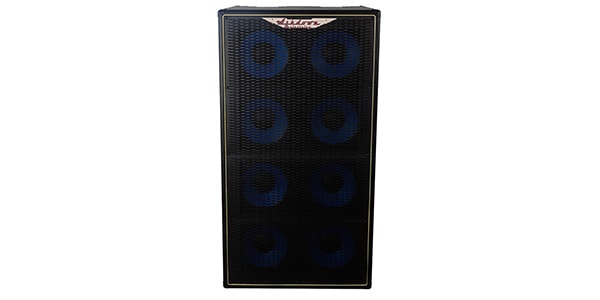
ASHDOWN / ABM-810H-EVO IV
After that, we recorded at a studio in Seiseki-Sakuragaoka and had Iwata-san—who we’d worked with during the Lyrics era—handle the mixing again.
He sounds like a reliable engineer.
Then the next one, we recorded again at that Seiseki-Sakuragaoka studio, but we had someone else do the mixing.
We made maybe two albums that way?
But the one after that, I remember very clearly—Ted from the Captains directed it for us.
I know that guy! He’s the bearded one who really gets things done.
Yep, he’s the bearded one (laughs).
That time, we rented out a live house for recording.
It was late at night at Shibuya Milky Way...
Oh, and the studio in Seiseki-Sakuragaoka was actually a renovated regular house, so we couldn’t make much noise.
I remember recording the bass through the line-in without using an amp.


Yeah, that makes sense if it’s just a regular house.
You would probably be done the moment someone hits a snare.
It was soundproofed to some extent, so drums were okay.
But when we recorded at the live house, I was so happy to finally get the chance to crank the amp up again.
Still, to minimize bleed-through, I think we put the amp in the backstage dressing room next to the stage.
Ah yeah, they have those little dressing rooms right offstage. That’s perfect for that.
It wasn’t completely soundproof, though.
Anyway, the engineer for that session was Fujii-san, who you know from the Captains too.
Fujii is from Jack zoo Ray Studio!
We’ve worked with him a lot and we’re super grateful for everything he’s done.
He brought just a laptop and an audio interface for the recording.
By that time, it was becoming more common to do full recordings with just a laptop setup, right?
Yeah! They’re so lightweight! It really feels like a whole different world now.
Right? At that time, I think we recorded drums, bass, and guitar together.
I think the keyboard and extra guitar tracks were done separately at home recordings.
Around then, home recording setups were slowly but surely getting better.
That’s what they call it at-home DTM, right?
Exactly. After finishing all the recording, we went to Fujii's studio for the mixing.
By then, the usual flow was to bring gear to a live house or studio for recording, and then mix it later at the studio.

That’s a flexible setup, for sure.
Of course, even now people still record at traditional studios, but considering budgets and all, this way has become more common.
Yeah, and more stuff can be done at home too.
Oh, and by the way… after the album OTONOTO, for the next release Zenbu Keisatsu we recorded in a pretty unusual order.
What unusual order?
At that time, we just couldn’t find a good moment to record the drum and bass rhythm section.
Since the release date was already set, and time was tight, we ended up recording the overdubs first.
That’s not something we’ve done before.
Yeah, overdubs can be recorded at home, so we did those first and then recorded the rhythm section to fit later.
That’s not the usual way, right? We did use a click track to keep tempo, but I remember struggling with tiny timing issues.
Honestly, I think it’s better to record the rhythm section first. By the way, this was done at a live house, booked late at night.
Got it. What about other stuff? You’ve done all kinds of things, right?
Hmm, yeah. For my band Lime Light it was similar — we had the engineer come to the studio to record who then mixed it later.
Sometimes we attended the mixing sessions, but other times the engineer mixed at home, sent us the tracks, we’d review them, send feedback, have them fix things, and repeat until it was done.
Checking mixes online — that’s normal now, but at first it felt kind of nerve-wracking.
I had this idea that everyone — band, staff, everyone — had to be in the same room, listening together to decide.
Yeah, the way you listen really changes depending on the environment—like the balance and all that.
So ideally, everyone in the band should be there for the mix.
The support act I’m currently playing with, maggie☆françois, works the same way.
And then… what about stuff related to you, kizuhiko? Like your solo work?
Thank you for all of your hard work! I really trust a bassist who does great work.
Thank you for acknowledging me! I never thought you’d ask! (laughs)
For my solo stuff, it’s usually like this: they send me tracks ahead of time—drums, some basic guitar, vocals—and then I record bass at home to get a feel for the direction before heading to the studio for the final recording.
Yeah, that’s right.
There was even a time when the rough take I sent back just worked so well it got used as-is. No need to go to the studio after all.
You’ve got your own home recording gear, right? That Zoom R-8?
I’ve got the same one.
Yeah, I think the R-8 might be discontinued now? The successor is probably the R12?
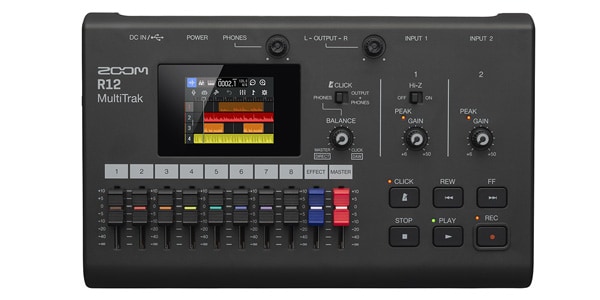
ZOOM / R12 MultiTrak
Thanks to that, I can sometimes finish everything at home.
I once recorded bass for a certain idol group’s song without ever meeting them face-to-face.
To this day, I still haven’t met them in person.
That happens. I’ve even heard rumors around that time about getting mastering done by top engineers at famous overseas studios online.
Recording without ever meeting the other side feels so modern.
But personally, I still prefer recording while facing each other and exchanging opinions.
I’m an old-school kind of band guy like that (laughs).
Because you’re a Showa-era person.
Also… I guess “the Showers” are currently on a break?
Like a really long summer vacation, huh?
Isn’t this conversation getting too long? (laughs) The Showers also did a pretty unusual recording, didn’t they? Like using an old secondhand cassette recorder, of all things.

Exactly.
Buying a used cassette recorder that can record, and then using it in the studio to record drums… what was the idea behind that again?
Since it’s The Showers, they wanted to record with Showa-era equipment.

That makes sense. It was a complete one-take recording, so Akira on drums must have struggled a lot. No partial fixes possible. Then they transferred the cassette tape audio into MTR, and the rest was home recording. Everything except drums could be edited as much as they wanted (laughs). And this time, it was you, Kizuhiko, who did the mixing?
Yes, as an amateur.
I think it really brought out a nice garage feel. But looking back like this, recording environments have definitely changed a lot since the 2000s.
Yeah. With advances in technology, there are now many more options for recording methods, so it’d be great to keep enjoying it in ways that fit the budget and the situation at the time. So, everything is?
For love!
The column "sound&person" is made possible by submissions from everyone.
For more details on submissions, click here.









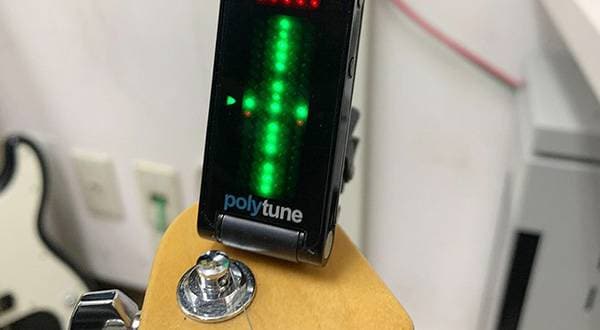
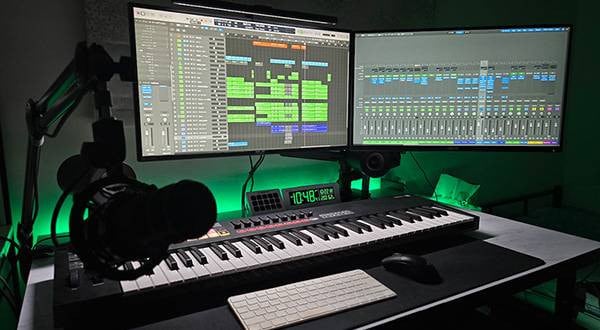
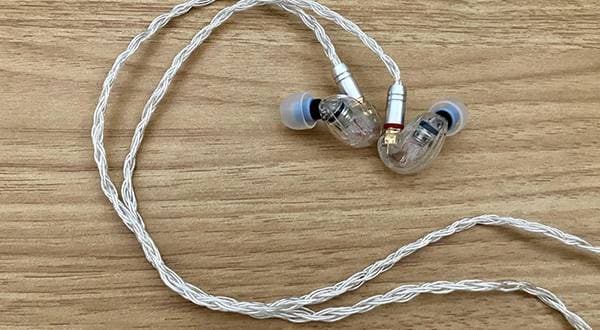
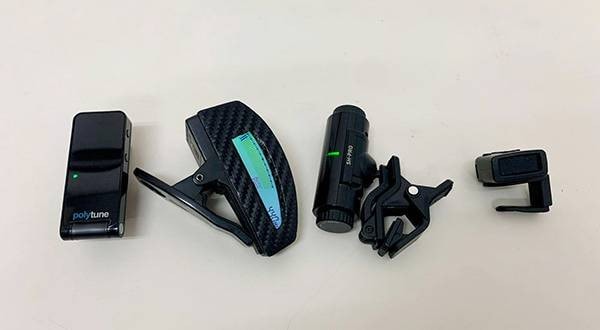
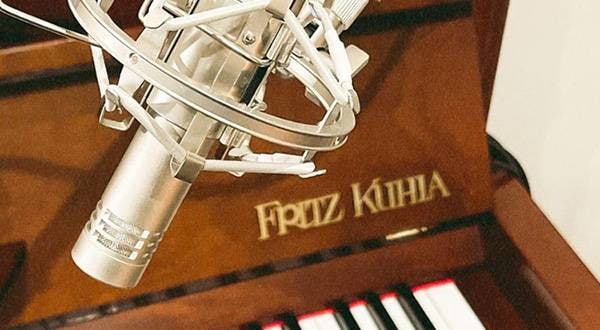
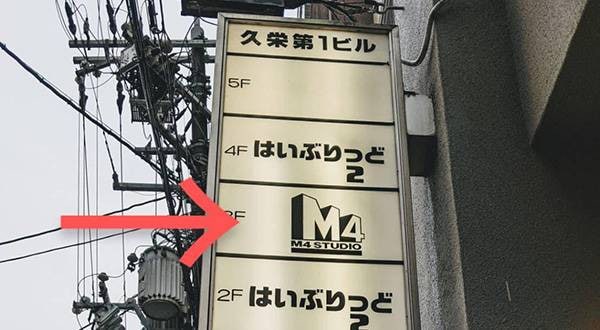

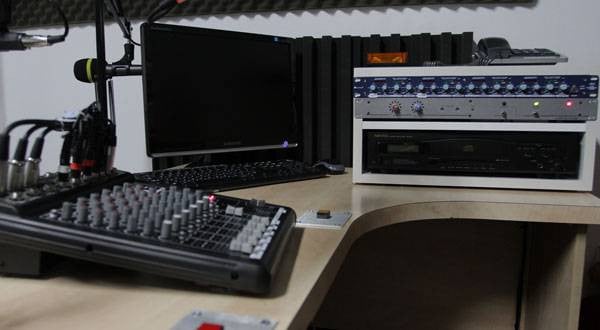
![Start Recording Instantly! [Multitrack Recorder]](/contents/uploads/thumbs/5/2021/11/20211119_5_15208_1.jpg)
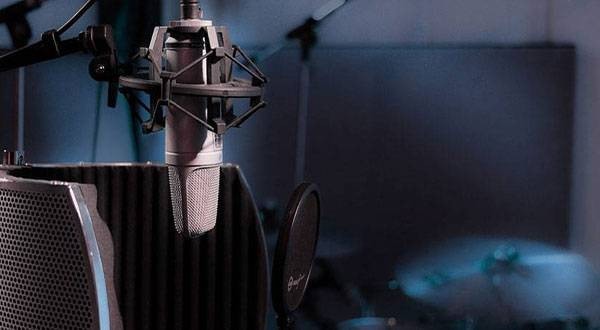
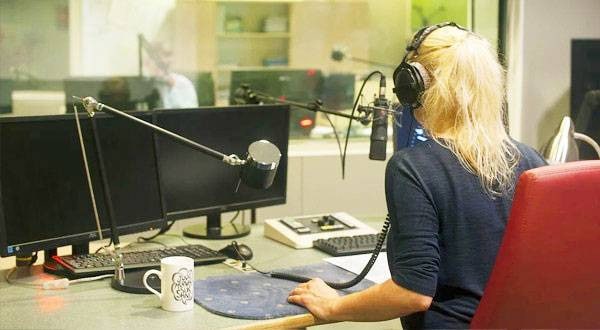
 ZOOMマルチトラックレコーダー Rシリーズ比較表
ZOOMマルチトラックレコーダー Rシリーズ比較表
 ZOOM LiveTrakシリーズ比較表
ZOOM LiveTrakシリーズ比較表
 zoom ブランドサイト
zoom ブランドサイト
 ASHDOWN ブランドページ
ASHDOWN ブランドページ
 自宅スタジオの作り方
自宅スタジオの作り方
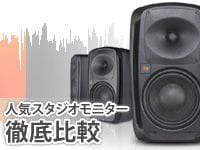 人気スタジオモニター徹底比較
人気スタジオモニター徹底比較
